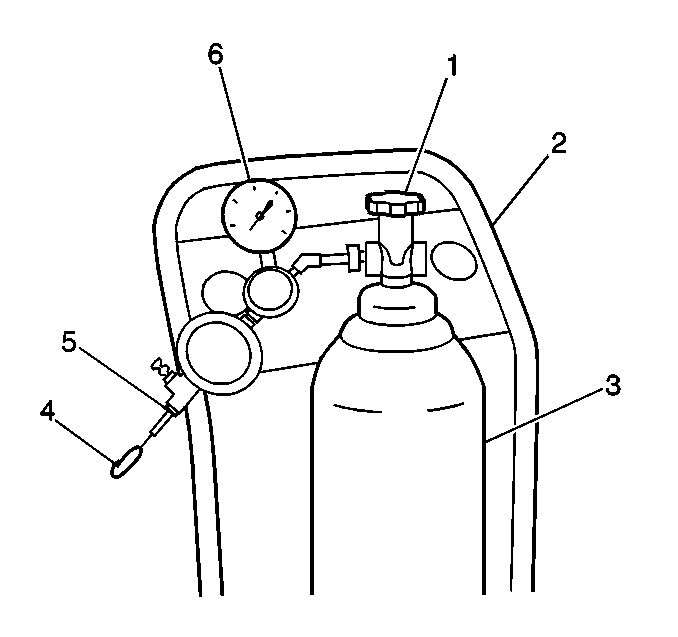For 1990-2009 cars only
Inspection Procedure
Tools Required
J 41413 EVAP Pressure/Purge Diagnostic Station
Whenever the DTC diagnostics lead to a no trouble found or a purge solenoid replacement, proceed with the following charcoal canister diagnostics.
Notice: Use the EVAP Pressure/Purge Diagnostic Station J 41413 in order to provide a clean, dry, low pressure gas source. Do not substitute any other pressurized gas source. Damage may result to the EVAP system.
The J 41413 is required to provide a clean, dry, low pressure gas source. Do not substitute any other pressurized gas source or damage to the EVAP system may result.
- Turn the ignition OFF.
- Remove the EVAP canister purge solenoid from the vehicle.
- Lightly tap the EVAP canister purge solenoid on a clean work area.
- Look for carbon particles existing from either of the vacuum ports.
- If no carbon release is evident, reinstall the components. Continue with the published service manual DTC procedures.
- If carbon is being released from either component, continue with this service procedure.
- Remove the charcoal canister from the vehicle.
- Turn off the main cylinder valve (1) on the EVAP purge/pressure diagnostic station J 41413.
- Disconnect the black hose (4) that connects the nitrogen cylinder to the cart J 41413 at the pressure regulator (5).
- Using a section of the vacuum hose, connect one end onto the open fitting of the J 41413 pressure regulator (5).
- Connect the other end of the vacuum line side of the EVAP purge line at the vehicle.
- Turn on the main nitrogen cylinder valve (1).
- Continue to blow any debris from the purge line for 15 seconds.
- Return the J 41413 to its original condition by re-installing the black hose (4) disconnected in step 9.
- Replace the EVAP purge solenoid and the charcoal canister with the new components.
- Proceed with the published service manual diagnostics for the manifold vacuum vehicles (4.3L).

Ported Applications with EVAP Vacuum Switch
- Connect a scan tool and display the data parameter EVAP vacuum switch.
- Start the engine and allow the engine to reach the operating temperature.
- Open the throttle until the engine speed reaches 2000 RPM.
- If the EVAP vacuum switch changes its state, go to step 6.
- If the EVAP vacuum switch does not change state, repair the low source vacuum condition by performing a complete throttle body service including a cleaning of the purge port(s). Go to step 1.
- If the EVAP vacuum switch does change state, proceed with the published service manual diagnostics.

Ported Applications with EVAP Service Port
- Connect the EVAP diagnostic cart J 41413 to the vehicle EVAP service port. Turn the four position switch to Purge.
- Start the engine. Allow the engine to reach the operating temperature.
- Open the throttle until the engine speed reaches 2000 RPM.
- Note the H2O vacuum gauge on the EVAP cart. The vacuum should read greater than 15 in H2O.
- If the vacuum is less than 15 in H2O, perform a complete throttle body service including a cleaning of the purge port(s) as outlined in the service manual. Go to step 1.
- If the vacuum is greater than 15 in H2O, continue with the published service manual diagnostics.

